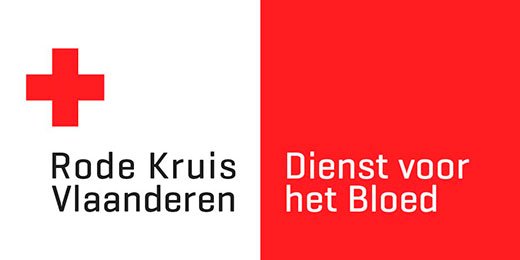Erythrocyte concentrate, autologous
Autologous blood products are collected and delivered as part of an autologous pre-donation procedure. They can only be transfused to the donor himself.
In addition to the fresh autologous erythrocyte concentrates described below, erythrocyte concentrates, frozen and thawed, can also be used as autologous products.
Product Codes
Code 'Blood Service'
E5259100
NIHDI Code
Hospitalized: 752 544
Non-hospitalized: 752 533
Preparation and composition
Patients eligible for autologous collection are free of severe heart disease and active bacterial infections and have tested negative for HIV antibodies, HbsAg and HCV antibodies.
An autologous erythrocyte concentrate is prepared from the patient's own whole blood by centrifugation followed by removal of the plasma. To the concentrated erythrocytes is added a nutritive preservative, specifically saline-adenine-glucose-mannitol (SAGM). An autologous erythrocyte concentrate has a hematocrit value between 0.50 and 0.70. The product contains varying amounts of Hb, mainly determined by the donor blood volume. All erythrocyte concentrates are deukocyzed by filtration and contain less than 1 x106 leukocytes/product.
Indications
Collection of autologous whole blood is indicated in patients with a clear indication, oa multiple antibodies to blood group antigens or antibodies to a public red blood cell antigen. Patients with anti-IgA also benefit from autologous transfusion. In addition, the probability should be high.
An autologous erythrocyte concentrate is used to increase oxygen transport in cases of blood loss and anemia. The transfusion threshold is between 7 and 10 g Hb per dl depending on other factors that determine oxygen transport capacity such as the patient's cardiopulmonary status. A patient from whom autologous erythrocyte concentrates are available should be transfused with the autologous units before homologous units are used.
In rare cases, the autologous collection may be frozen for later use. See Erythrocyte concentrate, frozen and thawed.
Dose and instructions for use
Dose
Transfusion of one erythrocyte concentrate increases hemoglobin concentration by an average of 1 g/dl and hematocrit by ± 3%.
Special precautions
In transfusion of an autologous erythrocyte concentrate, compatibility between the product and recipient must be ensured by comparing the identity of the patient indicated on the blood product and the identity of the patient to be transfused, and by performing a cross test between red blood cells from the product and serum from the recipient to detect possible sample mix-ups.
User Manual
Aseptic technique should be used during transfusion. Delivery sets and filters should be replaced in a timely manner in case of multi-unit transfusion. The erythrocyte concentrate is administered intravenously via a perfusion set with standard filter (170-260 µ).
For the first 10 to 15 minutes, a low infusion rate (± 5 ml/min) is set and the patient is closely observed for any transfusion reaction. Then the infusion rate is increased according to the clinical condition. The average transfusion time for an erythrocyte concentrate is 1 to 2 hours. It is recommended that the duration for transfusion of one unit be limited to a maximum of 4 hours.
Prevent backflow of blood from the patient into the transfusion set: always hang the blood bag higher than the patient's arm and close the roller clamp when moving patient and/or blood bag.
Excess units or any remnants will be disposed of as medical waste.
Warming the blood before administration is not necessary.
Warming of blood products during administration is required only in case of massive transfusion (> 50 ml per minute, or > 15 ml/kg/h in children), including exchange transfusion, - to avoid hypothermia of the patient -, and in case of clinically important cold agglutinins. Special heating devices validated for this application should be used.
Possible undesirable effects when the product is administered
Patients in whom autologous withdrawals have occurred are more and more frequently exposed to transfusions. During these transfusions, circulatory overfilling, nonhemolytic transfusion reaction such as chills and fever, and sepsis due to bacterial contamination of the blood product may occur.
If an acute transfusion reaction occurs, transfusion should be stopped immediately and appropriate symptomatic therapy initiated. The possibility that an incompatible homolog product has been administered should be ruled out. The following laboratory tests may be useful in cases of severe reactions: hemolysis parameters (haptoglobin, free hemoglobin, LDH, bilirubin), repeat cross-matching and blood group determination of patient and product, direct antiglobulin test, serum IgA, patient's hemoculture and bacteriological examination of the administered unit.
In case of a mild allergic transfusion reaction (itching, redness, urticaria), the transfusion can be continued if necessary after administration of antihistamines or corticosteroids.
Medication and other interactions
The erythrocyte concentrate should not be mixed with drugs or infusion fluids. Physiological saline solutions may be administered with blood, but not added to the blood bag. The hematocrit of an erythrocyte concentrate in storage solution is such that the addition of an isotonic saline solution for dilution is unnecessary.
Preservation and stability
An autologous erythrocyte concentrate must be administered within 42 days of preparation. It is stored in a separate room and separated from homologous blood products, between + 2 °C and + 6 °C.
An erythrocyte concentrate should not be used with signs of damage or decay.
Safety of autologous products
Blood is drawn from the patient's own blood. The blood type is determined and equals that of the patient, viral tests (HBV, HCV, HIV) and syphilis test are negative. Autologous units are stored between 2 and 6°C to prevent bacterial growth.
Episode
On medical prescription, following patient enrollment for autologous collection.
Last updated 11/04/24.
